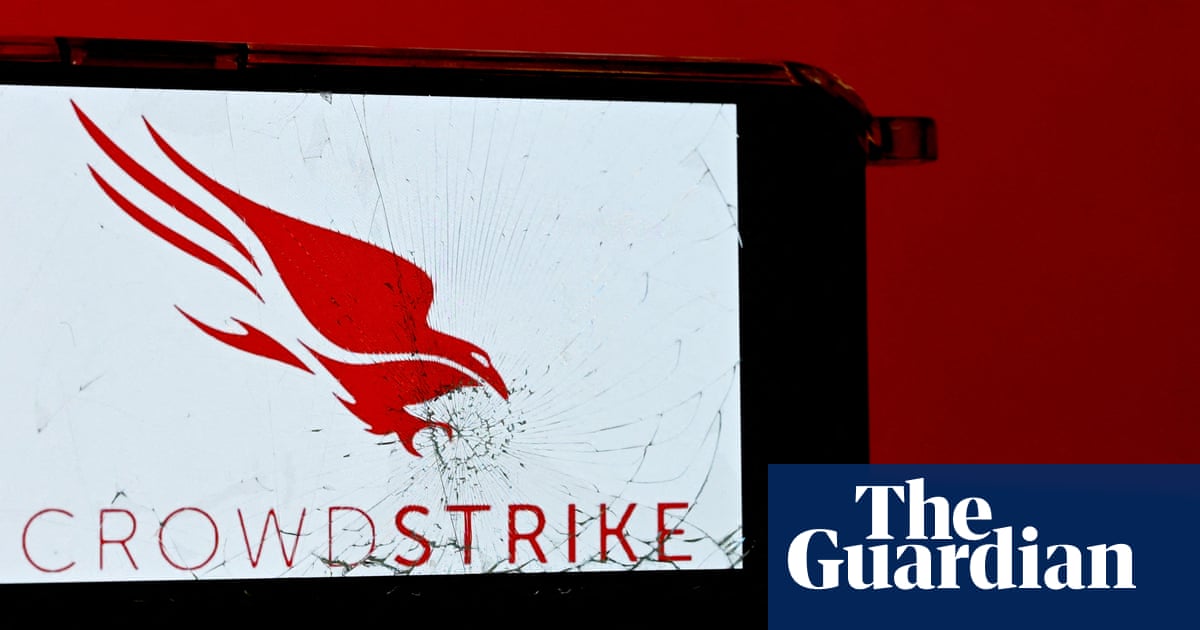US companies ship more than 1m tons of hazardous waste to other countries each year, raising questions over possible impacts on health and the environment, an investigation by the Guardian and Quinto Elemento Lab has found.
Exports of toxic waste, most of which is shipped to Mexico and Canada, have climbed 17% since 2018, US records show. And while sending it away for recycling and disposal is legal, some experts are concerned that more and more of America’s most dangerous discards are leaving the country.
In the Monterrey metropolitan area in Mexico, the investigation has uncovered high levels of lead, cadmium, and arsenic in homes and schools around a plant that recycles toxic dust produced by the US steel industry. Other huge quantities of waste go to Mexico to battery-recycling plants that experts worry are fouling the air and exposing workers to dangerous heavy metals.
In Quebec, Canada, children and adults who live near a smelter that processes electronic waste, including materials from Silicon Valley and other US locations, have been found to have high levels of arsenic in their fingernails. At another Quebec site, some of the toxic waste is buried in giant cells near a peat bog.
Allowing hazardous waste to cross US borders and move out of the country’s regulatory control is particularly a problem, experts say, when the waste ends up going to places where environmental management is outdated, inadequate or nonexistent. That is the case in Mexico, environmentalists there argue.
But there are even examples in more tightly regulated Canada that raise questions about whether it is environmentally responsible for US companies to send waste there.
“How can we accept being the trash can for the United States?” said Martine Ouellet, a former natural resources minister for Quebec who now heads the political party Climat Québec. She is fighting to stop the expansion of a landfill near Montreal which received 47,000 tons of US hazardous waste in 2022.
“We think it’s crazy that we import all this toxic waste.”
“We call it ‘waste colonialism’,” said Marisa Jacott, director of Fronteras Comunes, a non-profit focusing on chemical and industrial pollution in Mexico. “It’s a form of exploitation and environmental injustice that comes through the shipment of hazardous waste from richer countries to less affluent ones. It’s the United States treating Mexico as its back yard.”
Companies processing the waste in Canada and Mexico argue that it is possible to dispose of it or recycle it responsibly.
This investigation examines the underbelly of US industry by following its hazardous waste streams out of the country using export records. It is based on documents obtained through Freedom of Information Act requests, as well as thousands of pages of environmental records, health studies, and soil and dust sampling.
The data shows that the total quantity of hazardous waste exports has increased by 17% percent from 1.2m tons in 2018 to 1.4m tons in 2022.
Numerous studies have raised the concern that waste exports could create a “race to the bottom” in which pollution ends up going to the places with the least environmental oversight.
“The waste trade works like any other … They find the cheapest place to bring it,” said Tim Whitehouse, a former attorney for the US Environmental Protection Agency (EPA) who now runs the non-profit Public Employees for Environmental Responsibility. “The shippers know where to send it … It often ends up where the regulations are the weakest.”
‘Cradle to grave’ regulations end at the border
US law requires companies that produce hazardous waste to be legally responsible for managing it “cradle to grave”, meaning they must handle it safely from the time it is generated until it is disposed, and bear financial responsibility for any pollution it creates.
But this responsibility essentially stops at the border. Cross-border treaties, some of which date back to the 1980s, allow waste to flow out of the country to the US’s closest trade partners – as long as the receiving country consents and the company receiving the waste commits to handling it safely.
Once hazardous waste is exported, the US no longer has the authority to regulate it.
Former EPA office director Barnes Johnson, who once oversaw the unit that monitors waste sent abroad, said the US environmental agency has no way to oversee the emissions or safety of plants processing exports in receiving countries the way it does at factories in the US. So it is difficult for regulators to know exactly what happens to hazardous materials after they leave US borders.
“Nobody knows what’s going on with the emissions from the various plants that are in Mexico,” he said. “We don’t know what kind of oversight they are getting or what kind of exposures and risk they may be causing. You hear anecdotes about significant public health concerns.”
As regards Mexico, some exporting companies that ship the waste advertise that they free the producers of the waste from their “cradle to grave” responsibility.
“It may be hard to imagine, but transporting hazardous waste to Mexico is not only legal, but in many cases, it’s actually cheaper, safer and has a lower environmental impact than other forms of disposal,” proclaims an online brochure for Temarry Recycling. “When transporting hazardous waste to Temarry in Mexico, the US generators’ liability for the waste ends at the US border.”
Temarry handles solvents and other waste chemicals that range from dry-cleaning fluids to aviation fuel. Solvents, such as paint thinner, are chemicals used in industry to dissolve, dilute or extract other substances. They are just one kind of hazardous waste that is shipped from the US to Mexico that is causing concerns.
Temarry in Mexico accepted approximately 7,000 tons of toxic solvents and chemical mixtures in 2022, saying in its advertising that it accepts waste from US companies and distills it into clean solvents or combusts it for energy recovery, selling leftovers to cement kilns for fuel.
But the company’s problems have been well publicized. Triumvirate Environmental, a US firm that bought Temarry in 2021, alleged in a court dispute that the company’s Mexican equipment was “woefully inadequate to test, analyze and process” the waste it had promised to handle. It also alleged that its employees witnessed the former director of the company instructing a driver to take waste to an unauthorized location in Mexico and dump it into an open pit.
H Troy Romero, an attorney for the Temarry’s former director, Matt Songer, said his client denies all of these charges – and pointed out that the allegations were an attempt to defend against breach of contract claims that Songer filed against Triumvirate.
Temarry’s plant near the California border in Tecate, Mexico, was shut down for two months in 2022, after a chemical reaction resulted in the release of strong-smelling chemicals into the air around the community, a municipal record shows. Local officials criticized the company for not having procedures for handling dangerous spills and for failure to properly label its chemicals, according to the weekly newspaper Zeta.
A 2023 investigation of Temarry by the non-profit news organization CalMatters revealed a history of environmental violations and reports from neighbors that they were sickened by the smells around the plant.
Company officials declined to comment to the Guardian and Quinto Elemento Lab. At the time of the chemical release, company officials issued a statement saying that “its operations are legal and adhere to the highest standards of safety and environmental protection”, according to Zeta.
Still, accusations like this exemplify why some experts are concerned about shipping hazardous waste to Mexico.
Key standards that regulate industrial emissions in Mexico are lax or haven’t been updated in more than two decades in some cases. Environmental experts say this is problematic because the standards do not reflect the latest scientific knowledge on how pollutants affect human health.
The agency in charge of environmental inspection and enforcement, known by its acronym, Profepa, has had a budget cut of almost 50% over the past decade. This has affected the agency’s inspection and enforcement capacities, three major Mexican environmental non-profits recently charged. A union representing workers say staff do not even have enough money to buy gas for their work vehicles. Only eight inspectors in Nuevo León are in charge of supervising 10,000 companies, according to 2023 records.
In addition to solvents, two other major hazardous waste streams sent to Mexico are the subject of concerns. One is toxic steel dust. The steel industry has been sending increasing amounts – nearly 200,000 tons in 2022 – of the extraordinarily contaminated dust left behind when steel is pulled out of scrap metal to a plant in Monterrey, which recovers zinc from it.
As the Guardian and Quinto Elemento Lab revealed yesterday, soil and dust samples show homes and schools around the plant are contaminated with high levels of lead, cadmium, arsenic and zinc.
Eduardo Alverde Villarreal, general director of Zinc Nacional, the company that operates the plant, said in a statement that he did not have enough information to comment on the findings, but that the company was “committed to operating with transparency, in compliance with the law”. Mexico’s top environmental regulator, known by its acronym, Semarnat, said it would seek an investigation based on the findings.
But by far the biggest hazardous waste export shipped to Mexico is a half a million tons of lead-acid batteries, such as those used in cars, that are sent each year for reclamation of lead.
Lead is a highly poisonous metal and “there is no safe level” of exposure, according to the US Centers for Disease Control and Prevention. Even small exposures to lead can affect childhood brain development and contribute to preterm births, heart problems and kidney disease, studies have shown.
While the US has been cracking down on lead emissions allowable inside its own borders, EPA data shows that US companies exported nearly 4m tons of discarded lead batteries between 2018 and 2022 – mostly to Mexico, but also, in a growing trend, to South Korea.
The lead is reprocessed in secondary smelters and refabricated into new batteries, some of which are then reimported into the United States and sold to US consumers.
The fact that the vast majority of the lead needed to make car batteries now comes from recycling is a testament to how effective reclaiming metals can be. But environmental and trade groups worry that workers and residents in the countries receiving discarded US batteries aren’t getting the same protections from lead as US residents are.
“Mexico has less stringent environmental and occupational standards for the lead battery recycling industry than in the US,” said a 2023 report by the non-profit Occupational Knowledge International, which found high lead levels in soil surrounding plants in the Monterrey area that were receiving US batteries. “In addition,” it said, “little investment is made in enforcing environmental regulations in Mexico.”
“The US must recognize that allowing used lead batteries that are classified as hazardous waste to be exported to Mexico and other countries is contributing to environmental injustice abroad,” said the report.
Luis Hernández, a former worker at Eléctrica Automotriz Omega, one of six battery recycling companies handling US batteries in the heavily industrialized Monterrey area, said he was exhausted by the 12-hour night shifts at the plant, where he worked for 23 years. He said he was fired in 2021, after he started asking about unpaid overtime.
Hernández, 55, who now suffers from hypertension, said his job at the plant was to prepare the lead mixtures from broken-down batteries to be loaded into the furnaces. He said the workers had to wear masks and have their blood tested every three months.
But he said workers would frequently remove their masks to remain comfortable. He said his blood lead levels sometimes climbed to as much as 49 micrograms per deciliter, which researchers say is dangerous to health.
Officials at Eléctrica Automotriz Omega did not reply to a request for comment.
Numerous studies have noted that the amount of batteries being sent for recycling in Mexico has surged since the early 2000s, as the United States made its own laws more stringent and expensive for lead recycling companies within its own borders.
Trade records show that the number of lead-acid batteries exported to Mexico jumped by 3,600% between 2000 and 2021.
“We’ve been cracking down on lead emissions from battery recycling in the United States, and so now it looks like some of that material is just leaving the country,” said Jane Williams, executive director of California Communities Against Toxics.
“Essentially what you’re doing is evading regulations for toxic waste by taking it to Mexico,” she said.
‘A threat to public health’ in Canada
The US also exports huge and growing quantities of hazardous waste to its northern neighbor Canada – a total of 1.4m tons over five years. The exports, including chemicals like cyanide, contaminated soils, batteries and other metal-containing wastes, have increased by 25% over that time period, according to EPA data.
While Mexico only accepts materials headed for reclamation or recycling, Canada accepts waste for disposal as well.
Experts say they are more confident in Canada’s ability to manage the waste than Mexico’s, but in a number of cases environmentalists worry that the imports are contributing to pollution.
“Why are Americans so eager to send their waste outside of the US?” asked environmental toxicologist and activist Daniel Green, a former deputy leader of Canada’s Green party. “We understand that the laws make it to their advantage when US waste crosses an international border. So the lawyers of these US companies say, ‘If you get rid of the waste, you get rid of the liability.’”
Two sites in Quebec have become flashpoints of environmental protest.
The first is in the town of Rouyn-Noranda, in the mixed forests of western Quebec – where the testing of children’s fingernails has raised fears about the safety of toxic waste processing.
The Horne copper smelter was once known as one of the biggest contributors to acid rain in North America. After mines in the area closed in the 1970s, it began smelting discarded electronic waste for copper, which is increasingly needed for technological advances ranging from medical devices to electric cars. It was bought by international mining company Glencore in 2013.
Tens of thousands of tons of e-waste and other contaminated materials are shipped there from US sources, including companies in Silicon Valley and New York, according to Canadian hazardous waste records obtained by the Guardian and Quinto Elemento Lab. Waste also arrives from other nations, including Russia, Brazil and Germany, according to an investigation by Radio-Canada.
Residents have long worried about the toxic emissions from the smelter.
In 2018, Mireille Vincelette took her son and her daughter, then two and four years old, respectively, to the local hospital to donate their fingernail clippings to researchers tracing the effects of local pollution. Her daughter was found to have 13 times more arsenic than a control group of children living 100km (62 miles) away, and her son had four times as much.
“We don’t know the health risk that these numbers represent, but we know for sure that our bodies are absorbing a toxic product that has no safe level of exposure,” said Vincelette. She has learned that, over the long term, exposure to arsenic can lead to cancer, neurological disorders, endocrine problems, heart and lung disease, neurodevelopmental problems in children and stillbirths.
Government health studies have shown that residents around the smelter have shorter life expectancies, more cancers, a higher incidence of babies born with low birth weights and a higher incidence of pulmonary disease compared with Quebec as a whole.
A regional health director in 2020 declared the pollution around the smelter “a threat to public health”.
In a written statement, Glencore officials pointed out that the health authorities said that they cannot conclude any cause and effect between the activities of the Horne smelter and the health of the community. The statement said that the territory where the smelter is located has the highest life expectancy in the region (even though it is lower than Quebec’s as a whole) and that, in the latest health reports, it has lower rates of lung cancer than elsewhere in the region.
Glencore said it has reduced its outputs of cancer-causing arsenic, and plans to lower them further.
The smelter “imports materials from all over the world and meets every exporting and importing country’s local standards”, said the company’s statement. “To date, the Horne smelter meets the targets of its environmental permit.”
The Quebec government is planning to spend C$90.4m to move nearly 200 families away from the smelter to create a buffer zone between the plant’s pollutants and the community.
“I feel guilty to be raising my children here and exposing them to these toxic emissions,” said Vincelette, a chiropractor who has since organized a community group to fight emissions from the plant.
The second site of environmental concern is a hazardous waste depository bordering wetlands just outside urban Montreal, Quebec.
It is an industrial waste treatment center and landfill operated by Stablex, a US-owned company. And it occupies a tract about the size of 250 American football fields on the edge of the suburban town of Blainville.
The site received 47,000 tons of US hazardous waste in 2022, according to EPA records, including more than 10,000 tons of contaminated soils and sludges, as well as substances such as cyanide, mercury and nitric acid. (It also receives waste from other regions in Canada.)
Now Stablex is proposing an expansion on to city-owned land that would double its capacity, allowing it to continue operating until 2065. The new capacity would be built into forest and wetlands at the edge of an environmentally sensitive peat bog.
The company’s website says it permanently secures hazardous wastes for burial by “treating, stabilizing, and then binding them” before putting them “in a secure placement cell” and promises “to dispose of them permanently and without risk to the environment”.
The technology was questioned last year by a report from Quebec’s environmental watchdog agency, which said the stabilization process was developed 50 years ago and has never been subjected to testing outside a laboratory.
The report recommended against authorizing the expansion and called for testing to be done on the effectiveness of the Stablex process by checking samples taken from existing landfill cells. It also recommended strengthening monitoring of the barriers around the site to make sure it doesn’t pollute the surrounding wetlands in future decades.
In its statement, the company said: “Our process and techniques are safe: they are subject to strict and regular controls.”
Maxime Couture, a spokesperson for the company, said the facility’s primary role is to safely and responsibly treat the hazardous residuals of more than 600 Quebec companies.
“While we do receive materials from other jurisdictions, it’s important to remember that the environment knows no borders,” he said. “Cross-border shipments of waste are fairly common, including shipments from Canada to the US, and US to Canada.”
Marie-Claude Beaulieu, a Quebec environmental leader whose organization, Mères au Front, has been working with local residents in Blainville to oppose the expansion, said that in the 41 years since the landfill opened, the town has grown from 18,000 to 60,000 residents and homes are just a few hundred yards from the waste site.
“The citizens are very afraid: they’re afraid of cancer, they’re afraid for their kids and even their dogs,” she said.
“There is a risk of environmental catastrophe,” she said. “People are worried about transport, about explosions, about the water running off of the site.”
However, the company said its latest proposal is designed to keep the waste as far from nearby inhabitants as possible.
Water and sediment samples taken by local residents around the site in December 2023 found cadmium levels 320 times higher than the Quebec environmental criteria for sediments in streams and rivers, as well as concerning levels of arsenic, copper and zinc.
But in April, Quebec’s environmental ministry did its own water sampling and said that while it did find some anomalies, they “are considered isolated and not worrisome”.
Couture said the company cannot comment on the residents’ testing because it doesn’t know the methodology. But he said that over a recent eight-year period, the government has conducted “65 field inspections and several sampling campaigns that detected no sources of contamination”.
“While we share the societal objective of reducing hazardous waste, the reality is that we must continue to responsibly manage the waste generated by the production of consumer goods that people use every day,” he said. “Without a facility like ours, these materials could end up dispersed in the environment without adequate treatment or monitoring.”
Last year, after citizen outcry, the town revoked its offer of city land for the expansion. Local environmentalists say the company and the Quebec government still seem to be pressing for approval.
The environmental groups say they are not pushing to close the site, but want the waste to be limited to just that from Quebec, which they say could be handled without expanding the site.
‘Out of sight, out of mind’
US exports of hazardous waste have increased to another, more far-flung destination. South Korea received approximately 1m tons of waste, mostly lead batteries, over a four-year period ending in 2022, and it is the only other major recipient of US hazardous waste. The amount it receives more than doubled in five years – jumping to 296,000 tons in 2022 from 142,000 tons in 2018.
Some experts argue there should be a fundamental rethink of how the US handles its most toxic byproducts.
“The US should be managing its own hazardous waste in an environmentally sound manner,” said Lee Bell, an international expert on toxic contaminants and a policy adviser to the International Pollutants Elimination Network.
He pointed to the “proximity principal” adopted by the European Environment Agency, which says that waste should be managed as near as possible to the place it is generated to avoid risk of contamination caused in transport or by mishandling.
The export rules have remained virtually unchanged despite major trade negotiations over the decades, such as Nafta, which allowed increased trade between the US, Canada and Mexico, and a 2020 treaty that updated those provisions, said Simone Müller, a professor of global environmental history at the University of Augsburg in Germany.
“Part of the issue with waste is that it’s ‘out of sight, out of mind’,” said Müller, who is also the author of a 2023 book on the United States’ history of dumping its waste on other countries.
“If we were forced to find solutions to our hazardous waste – and not think ‘I’m going to pay this company and they’re going to take it away’ – we would finally start talking about ways to reduce waste production,” she said.
Carey Gillam contributed reporting
Quick Guide
Methodology
Show
Hazardous waste export summaries were based on the EPA’s Waste Import Export Tracking System (WIETS) from 2018 to 2022, which was obtained through Freedom of Information Act requests. Although most exports were originally described in weights, some which were described as liquid volumes in liters were converted to estimated weights based on the weight of water. Some other shipments (usually contaminated soils) originally described in cubic meters were converted to estimated weights based on the weight of dirt.
Martín Soto Jiménez from the Universidad Nacional Autónoma de México (UNAM) and his team collected the soil and dust samples around the Zinc Nacional plant in Monterrey in July 2023. Samples included outdoor dust and soil and, where possible, indoor dust samples and wipes of windowsills.
Samples were not taken in locations with loose or peeling paint, to avoid the possible presence of lead-based paint.
The research also took into consideration expected background contamination levels in soil.
An unrelated 2024 study by a PhD student at the Universidad Autónoma de Nuevo León (UANL) tested lead, cadmium and zinc levels in road dust around the entire Monterrey region. While it found some very elevated lead levels in Monterrey’s commercial district (about 8km from Zinc Nacional’s plant), lead levels in the north-eastern region, where the plant is located, averaged 53 parts per million (ppm). This was far lower than the lead levels found at outdoor locations around the Zinc Nacional plant by Soto Jiménez, which averaged 323ppm.
The same UANL study tested natural background levels in nearby areas unaffected by human development. Again, levels of lead, cadmium and zinc (lead of 7.4ppm, cadmium of 0.25ppm and zinc of 70ppm) were far lower than levels discovered around the Zinc Nacional plant.
The UANL study did not test indoor locations. In the study by Soto Jiménez, the average lead level found in dust wipes taken inside homes around the plant was 10,900 micrograms per square foot. In contrast, the EPA’s action level is 40 micrograms per square foot.
While Zinc Nacional is in an industrial area, the closest other major reporter of lead, cadmium or arsenic emissions is a steel mill 4km to the south.
US health risk thresholds for lead, cadmium and arsenic were selected from the EPA’s Regional Screening Levels guidelines, which are considered to be protective for humans over a lifetime. The action level for lead found in indoor window sill dust wipes was from the new guidelines adopted by the EPA in October.
Mexican standards came from a 2004 regulation, NOM 147 of the Secretaría de Medio Ambiente y Recursos Naturales (Semarnat). The Guardian and Quinto Elemento Lab generally used the EPA’s risk thresholds for pollutants, which are lower and are updated more frequently based on the latest human health research. These would be the guidelines used if the waste were processed in the US.
Air emissions reports for Zinc Nacional and about 1,000 other companies in the Mexican state of Nuevo León were examined in the Mexican government’s Cédula de Operación Anual, which was obtained through public records requests. Top emitters of arsenic, carbon dioxide, lead and its compounds, and cadmium and its compounds were determined using the methodology employed by the EPA.
Thanks to the many academics and other experts who provided technical guidance for this report, including James Rybarczyk, emeritus chemistry professor at Ball State University, and Selene Martínez, executive director of the Citizens Air Quality Observatory of the Metropolitan Area of Monterrey (OCCAMM).
Bruce Lanphear of Simon Fraser University and Jill Johnston of the University of Southern California reviewed the soil sample data, noting it was reminiscent of pollution around shuttered plants in the US, and provided insight on possible health implications.
Thanks also to Monterrey resident Miguel Europa.
The Environmental Reporting Collective supported this project with a grant.
Editors: Alastair Gee, Alejandra Xanic
Data visualization and factchecking: Alvin Chang, Efraín Tzuc
Story factchecking: Bojana Pavlović










